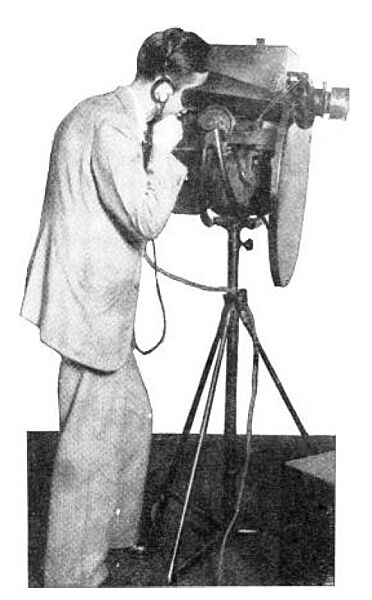
Image: Jenkins mechanical scan television camera 1931

Description: A spinning disk television camera at the Jenkins Television Co. studios in 1931. Mechanical scan television technology was used in experimental TV broadcasting during the 1920s and 30s until it was superseded by electronic-scan technology in the 1940s, which was used in the first large scale TV broadcasting in the 1940s. This television camera uses a large spinning disk pierced with a spiral pattern of holes (its housing is visible at front of camera), called a Nipkow disk. Each hole passing across the image creates one scan line. The light passing through the hole hits a phototube which converts it into an electric current which is proportional to the brightness of the image at each particular point. The images produced by these mechanical television systems had very low resolution, usually either a 60 line image at 20 frames per second, or a 48 line image at 15 frames per second.
Title: Jenkins mechanical scan television camera 1931
Credit: Retrieved March 19, 2014 from Austin Lescarboura, "Television Programs" in Television News magazine, Popular Book Corp., New York, Vol. 1, No. 2, March-April 1931, p. 12 on AmericanRadioHistory.com website.
Author: Unknown authorUnknown author Austin C. Lescarboura
Permission: This 1931 issue of Television News magazine would have the copyright renewed in 1959. Online page scans of the Catalog of Copyright Entries, published by the US Copyright Office can be found here. [1] Search of the Renewals for Periodicals for 1958, 1959, and 1960 show no renewal entries for Television News. Therefore the magazine's copyright was not renewed and it is in the public domain.
Usage Terms: Public domain
License: Public domain
Attribution Required?: No
Image usage
The following page links to this image:

